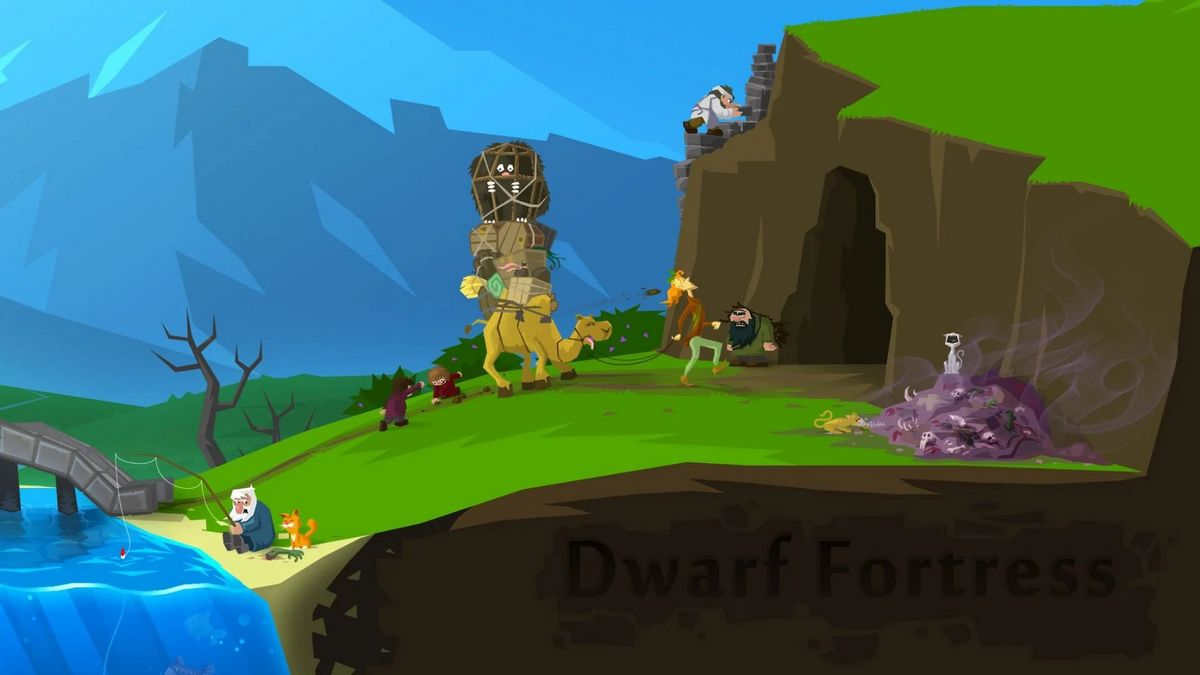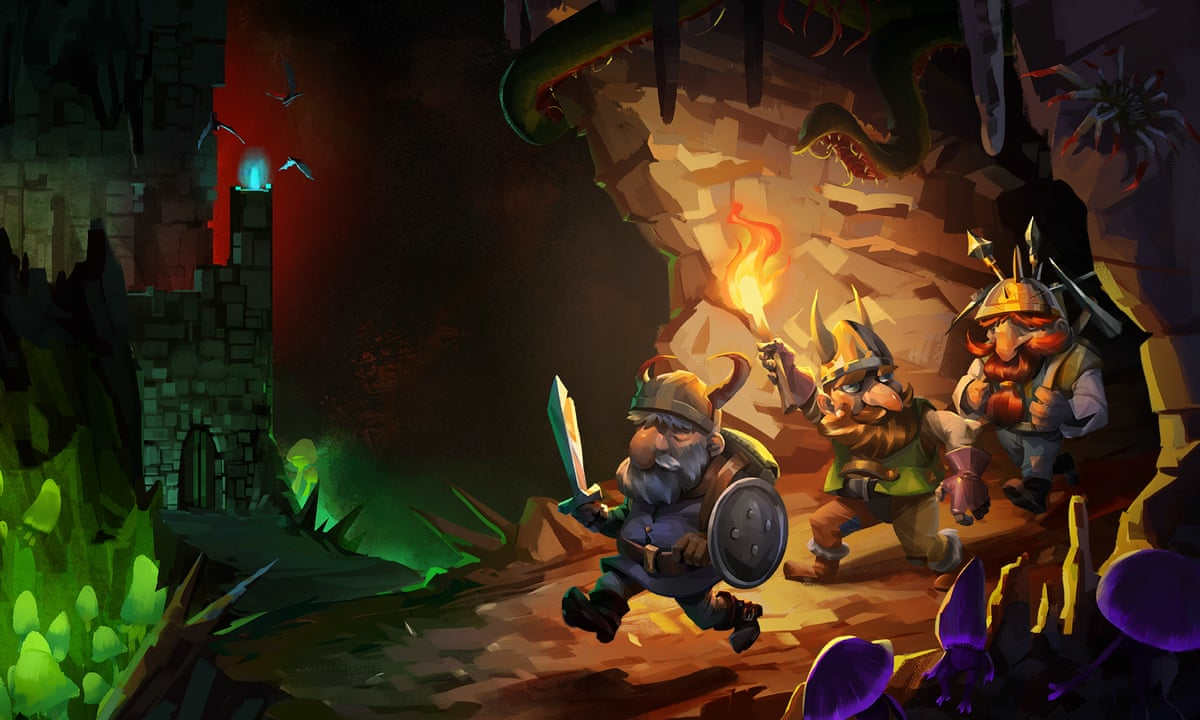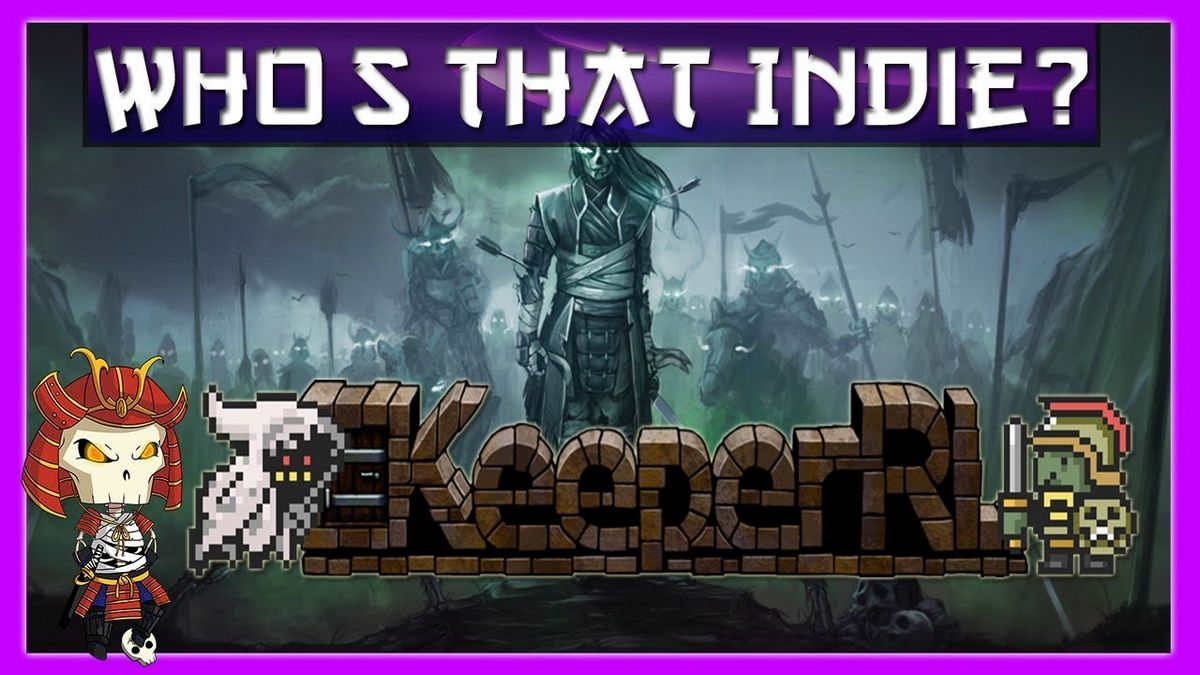Dwarf Fortress is a game that has garnered a cult following in the gaming community due to its complex gameplay mechanics and unforgiving difficulty. Developed by Tarn Adams, Dwarf Fortress is a city-building simulation game with roguelike elements set in a procedurally generated world. The game offers players an incredible amount of control over their fortress, from designing intricate underground structures to assigning individual tasks to each dwarf.
However, Dwarf Fortress’s complexity can be daunting for new players as it features numerous systems such as food production, military strategy, and resource management that require careful planning and execution. Additionally, the game’s ASCII graphics may intimidate some players who are accustomed to modern games’ sleek visuals.
Despite these challenges, Dwarf Fortress has enjoyed critical acclaim for its unique approach to gameplay and storytelling. Players assume the role of overseer of their dwarven settlement while navigating through various crises such as invasions or natural disasters. This narrative-driven approach creates an immersive experience where every decision made affects the fate of the player’s settlement.
In this article, we will explore what makes Dwarf Fortress such a captivating experience for gamers seeking something beyond traditional city-building sims or RPGs. We will delve into its intricate systems and examine how they contribute to creating compelling narratives within the procedural generation framework that sets it apart from any other similar title on offer today.
- The history and development of Dwarf Fortress: A comprehensive overview of how the game has evolved over the years, from its humble beginnings as a side project to one of the most popular and complex simulation games in existence
- Understanding Dwarf Fortress’s gameplay mechanics: An in-depth look at the various systems that make up Dwarf Fortress’s intricate gameplay, including crafting, mining, military management, and more
- The importance of ASCII graphics in Dwarf Fortress: Unlike many modern games with flashy 3D graphics, Dwarf Fortress uses simple ASCII symbols to represent characters and objects within the game world. This article explores why this design choice is not only unique but also important to its overall appeal
- Pro tips for playing Dwarf Fortress like a pro: For players looking to take their game experience to the next level, these expert tips offer insights on everything from setting up efficient fortress layouts to mastering combat tactics against goblin invaders
- Get creative with mods: While already an incredibly deep game by default, there are thousands of mod options available that can completely change or enhance your gaming experience – we examine some must-try options!
- How community-driven content keeps dwarf fortress relevant after all these years? From fan-made tools such as DFHack which makes changing settings easier than ever before or farnsworths’ native modding tools allowing other people access into coding aspects behind it; it seems apparent that player created content has helped keep this title vibrant even after so long since release date back in 2006
- Dwarf fortress economics & trade – Many players focus heavily upon military combat however another aspect worth exploring is economy/trade networks which dwarves create between settlements nearby themselves being able move resources around effectively helps maintain healthy growing population while expanding territory without need violence whatsoever!
- How art imitates life through fortress creation – With so much variety both mechanically visually across all different types creatures items generated randomly each session; coupled with dark mood setting; it’s no surprise that dwarf fortress has inspired countless artists to create works based upon this game
The history and development of Dwarf Fortress: A comprehensive overview of how the game has evolved over the years, from its humble beginnings as a side project to one of the most popular and complex simulation games in existence
It was created by two brothers, Tarn and Zach Adams, who had always wanted to develop a game together. Dwarf Fortress began as a side project for the brothers while they still worked full-time jobs, but it quickly gained popularity among fans of simulation games.
The early versions of Dwarf Fortress focused on creating an open world where players could build their own fortresses and manage the daily lives of dwarves within them. Over time, more features were added to the game such as combat mechanics, magic systems, and advanced AI behaviors for characters within the game.
One major turning point in Dwarf Fortress’s development came with its release on Steam Early Access in 2019. This allowed the developers to not only gain more funding for further development but also reach new audiences who may have never heard of or played the game before. Since then, Dwarf Fortress has continued to evolve with regular updates adding new features such as improved graphics and user interface options.
Overall, Dwarf Fortress’s history is one marked by dedication from its developers and passionate support from its player base. Its growth from a simple side project into one of the most popular simulation games today speaks volumes about both its quality and appeal to gamers worldwide.
Understanding Dwarf Fortress’s gameplay mechanics: An in-depth look at the various systems that make up Dwarf Fortress’s intricate gameplay, including crafting, mining, military management, and more
It requires players to manage a colony of dwarves as they carve out their own underground fortress, survive in harsh environments, and defend against various threats. The game’s mechanics are heavily focused on resource management, crafting, and military strategy.
One of the most important gameplay mechanics is mining. Players must dig tunnels through rock formations to acquire precious metals and stones for use in crafting weapons, armor, and other essential items. This process is not only time-consuming but also dangerous since cave-ins can occur at any moment.
Another crucial aspect of Dwarf Fortress’s gameplay is crafting. There are hundreds of different materials available in the game that can be used to create an array of objects ranging from furniture to weapons. Each material has its unique properties that affect the quality and durability of crafted items.
Military management plays a significant role in keeping your colony safe from external threats such as goblin invasions or giant beasts. You’ll need to train your dwarves into skilled soldiers while also equipping them with appropriate gear for combat scenarios.
Overall, Dwarf Fortress’s gameplay mechanics are vast and intricate enough that each playthrough feels like an entirely new experience where anything could happen at any given moment. While it might seem daunting initially for newcomers due to its steep learning curve, those who take the time to learn all these systems will find themselves lost into this fascinatingly complex world full of endless possibilities!
The importance of ASCII graphics in Dwarf Fortress: Unlike many modern games with flashy 3D graphics, Dwarf Fortress uses simple ASCII symbols to represent characters and objects within the game world. This article explores why this design choice is not only unique but also important to its overall appeal
While modern games rely heavily on flashy 3D graphics, the developers of Dwarf Fortress have made a conscious design decision to use simple ASCII symbols to represent characters and objects within the game world. This approach not only sets Dwarf Fortress apart from other games but also provides a unique gameplay experience for its players.
One key advantage of using ASCII graphics is their universality – they can be easily rendered on any device without requiring high-end hardware or specialized software. This allows players with older computers or limited resources to enjoy the game just as much as those with more powerful machines. Moreover, this simplicity ensures that the focus remains firmly on gameplay rather than visual spectacle, making it accessible to gamers who value gameplay over visuals.
Another important aspect is how these simple symbols allow for greater player immersion by relying solely on imagination and interpretation. Players must interpret what each symbol represents and use their creativity to visualize scenarios based on these symbols, which adds depth and richness to the gaming experience. In conclusion, while many may scoff at its simplistic appearance initially, Dwarf Fortress’s choice of using ASCII graphics proves crucial in providing an immersive and unique experience that sets it apart from other titles in today’s market dominated by hyper-realistic graphic design trends.
Pro tips for playing Dwarf Fortress like a pro: For players looking to take their game experience to the next level, these expert tips offer insights on everything from setting up efficient fortress layouts to mastering combat tactics against goblin invaders
While the game can be complex, there are several pro tips that can help players take their experience to the next level.
One of the key elements in Dwarf Fortress is efficient fortress layout. Players should focus on creating a compact design that maximizes space while also minimizing travel time for dwarves. This means placing workshops and stockpiles near each other to reduce walking distance and using traps strategically to defend against invaders.
Combat tactics are also important in Dwarf Fortress, particularly when dealing with goblin invasions. Players should consider training squads of military dwarves early on, equipping them with powerful weapons and armor. Proper positioning during battle is crucial; defensive positions behind walls or fortifications can help protect your army from ranged attacks.
Finally, managing resources effectively is critical for success in Dwarf Fortress. Keep track of food supplies and make sure you have enough reserves for emergencies. Utilize different types of ore to craft weapons, armor, and tools efficiently while avoiding waste.
By implementing these pro tips into gameplay strategy, players will be able to maximize efficiency within their fortress while defending against enemy threats. With practice and dedication towards mastering combat tactics coupled with resource management skills it won’t take long before they become experts at playing Dwarf Fortress like a true pro!
Get creative with mods: While already an incredibly deep game by default, there are thousands of mod options available that can completely change or enhance your gaming experience – we examine some must-try options!
One of the reasons why this game remains so popular is because of the thousands of mod options available which allow players to completely change or enhance their gaming experience.
One must-try option in Dwarf Fortress mods is “Masterwork Dwarf Fortress” which adds new creatures, items, buildings, and even civilizations to the game. This mod also introduces new professions such as alchemist or necromancer, as well as expanded magic system complete with spellcasting and magical artifacts.
Another popular mod is “DFHack”, which provides players with new tools to help manage their fortress more efficiently. With DFHack installed, you can use hotkeys for quick access to frequently used menus or designate specific areas for your dwarves to work on. Additionally, this mod also includes a wide range of bug fixes and performance improvements.
Finally, “Legend Viewer” allows players to explore their generated worlds outside of the confines of Dwarf Fortress’ gameplay mechanics. This tool generates maps that show all historical events that occurred in your world while providing detailed information about each event’s participants.
In conclusion, Dwarf Fortress offers an incredible amount of depth by default but installing mods can take your gaming experience up several notches higher. There are countless mods available out there from enhancements like improved graphics & textures packs through larger scale additions like adding entire new civilisations – don’t be afraid go down rabbit hole!

How community-driven content keeps dwarf fortress relevant after all these years? From fan-made tools such as DFHack which makes changing settings easier than ever before or farnsworths’ native modding tools allowing other people access into coding aspects behind it; it seems apparent that player created content has helped keep this title vibrant even after so long since release date back in 2006
However, what makes the game truly stand out is its robust modding community, which has been instrumental in keeping the title relevant to this day. The community-driven content not only adds new features and gameplay mechanics, but also extends the replayability of Dwarf Fortress beyond measure.

DFHack is one such tool that has allowed players to easily customize their gaming experience by altering settings and introducing new features without having to delve into complicated code. Additionally, Farnsworth’s native modding tools have given players direct access to the coding aspects behind Dwarf Fortress facilitating the creation of mods that introduce entirely new gameplay elements or modifications of existing ones.
The dedication of these fan-made tools speaks volumes about how much love there still is for this game even after all these years post-release. It shows that gamers are willing to go above and beyond just playing games; they want more control over their experiences and are eager to contribute back towards shaping them as well. Thus, Dwarf Fortress continues to evolve with each passing year thanks largely due its passionate player base who keep it alive through ongoing development via mods, updates or related resources like tutorials or wikis- becoming a true masterpiece crafted collectively by its avid fans!
Dwarf fortress economics & trade – Many players focus heavily upon military combat however another aspect worth exploring is economy/trade networks which dwarves create between settlements nearby themselves being able move resources around effectively helps maintain healthy growing population while expanding territory without need violence whatsoever!
As players begin to establish their fortress, they will quickly realize the importance of creating an effective economy that can sustain their growing population. This involves setting up trade networks between nearby settlements so that resources can be moved around efficiently.
In order to build a successful economy in Dwarf Fortress, players must carefully manage their resources and ensure that they are being used effectively. This means establishing supply chains for various goods such as food, drink, and raw materials like wood or metal. These resources can then be traded with other settlements in exchange for goods that may not be available locally.
One key aspect of Dwarf Fortress economics is the use of currency. Players must decide on a currency system for their settlement – whether it’s gold coins or some other form of commodity money – which allows them to trade with other settlements more easily. The value of this currency will depend on supply and demand factors within the game world.

Overall, while military combat may be the focus for many players in Dwarf Fortress, those who take the time to develop an effective economic system will find themselves able to expand their territory without resorting to violence. With careful management and planning, dwarves can create thriving economies built upon efficient trade networks that allow them to thrive in even the harshest environments!
How art imitates life through fortress creation – With so much variety both mechanically visually across all different types creatures items generated randomly each session; coupled with dark mood setting; it’s no surprise that dwarf fortress has inspired countless artists to create works based upon this game
One way in which this game imitates life through fortress creation is by allowing players to simulate real-world scenarios, such as managing resources and building structures for defense and survival. The game’s randomly generated creatures and items also add an element of unpredictability, making each session different from the last.
Moreover, the dark mood setting of Dwarf Fortress adds another layer of depth to its storytelling capabilities. Players are forced to confront difficult situations such as famine, disease outbreaks, or even hostile invasions – all while trying their best to keep their fortress alive. This sense of struggle resonates with many people on a personal level since it mimics our daily lives filled with challenges that we must overcome.
The variety available within Dwarf Fortress allows artists’ imaginations to run wild when creating works based upon the game – be it paintings or sculptures or digital art pieces. The possibilities are truly endless! Overall, Dwarf Fortress allows us as both players and artists alike – an opportunity to explore what it means to create shelter under adverse conditions while simultaneously exploring our own creativity within these constraints.
In conclusion, Dwarf Fortress is a highly complex and challenging game that offers players an incredibly deep and rich experience. Its detailed simulation of a dwarven civilization provides countless opportunities for creativity, problem-solving, and exploration. The game’s steep learning curve may seem daunting at first, but it rewards dedicated players with endless depth and complexity.

Despite its lack of graphical polish, Dwarf Fortress remains one of the most beloved games in the indie gaming community. Its unique blend of strategic gameplay mechanics, immersive storytelling elements, and emergent simulations make it a standout title among other strategy games.
Overall, Dwarf Fortress is not just a game—it’s an entire universe waiting to be explored. Whether you’re looking for an engaging strategy experience or simply want to immerse yourself in a meticulously crafted world full of memorable characters and stories, this game has something for everyone. So if you’re looking for your next gaming adventure to dive into headfirst—look no further than Dwarf Fortress!
Read More:- Experience the Ultimate Gaming Adventure with The Orange Box – Play Now!.
- Experience the Power of Trade with Patrician III: Rise of the Hanse Game – A Thrilling Adventure!.
- Conquer the World: Play Europa Universalis III and Rule as a Mighty Empire! (69 characters).
- Discover the Best Strategies for Dawn of Discovery and Rule Your Empire! (70 characters exactly).
- Conquer Japan's Feudal Era in Nobunaga's Ambition: Rise to Power Game – Unleash your Strategic Prowess!.
- Conquer Ancient Rome with Europa Universalis: Rome – Vae Victis Expansion Pack! (68 characters).
- Conquer the battlefield with Stronghold: The ultimate game of strategy and domination – now available!.